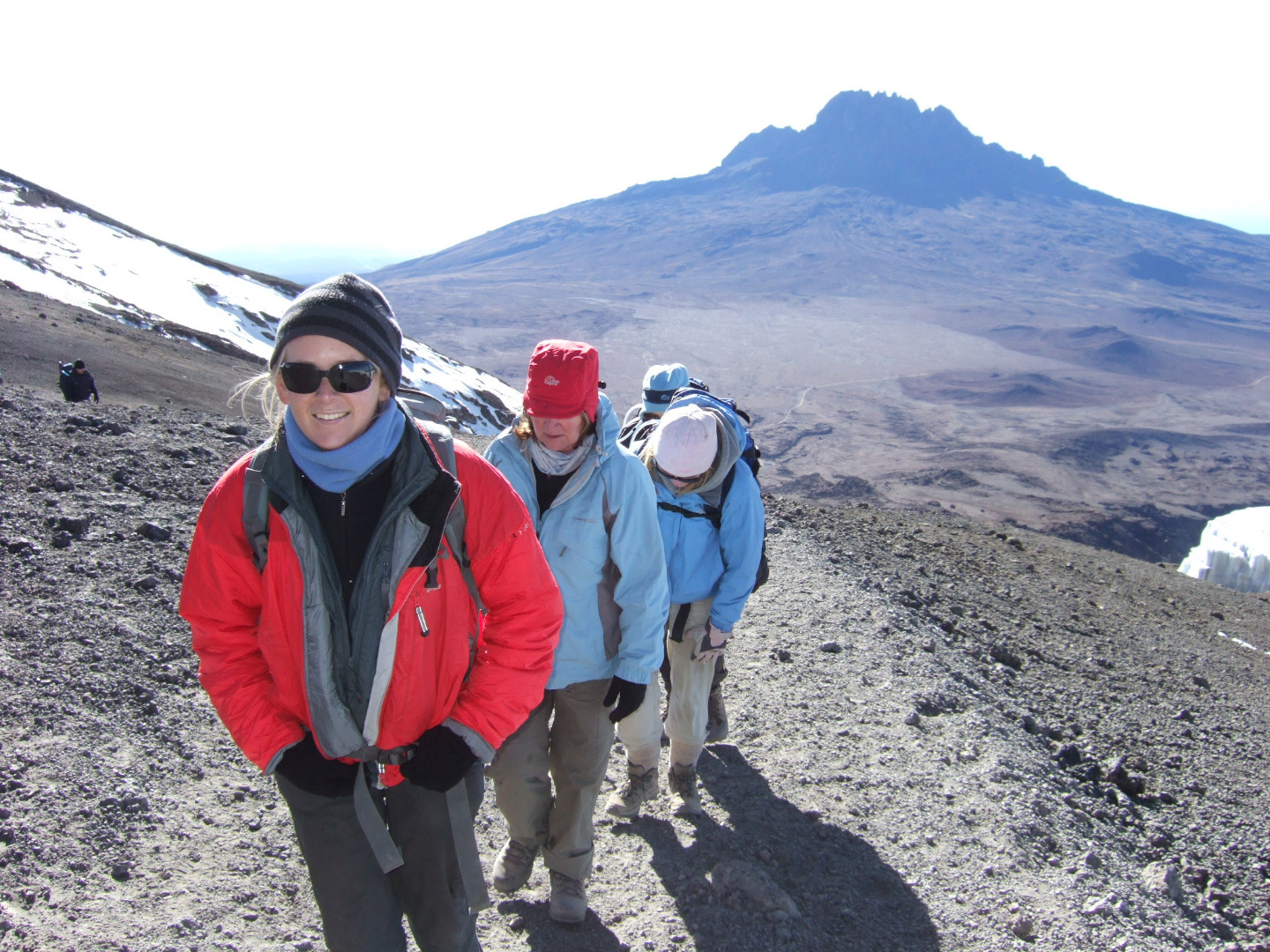
Kit Advice for Climbing Kilimanjaro and Mt Meru
Kilimanjaro and Mt Meru all require similar kit for non technical climbs (treks), which covers the vast majority of our adventures. If you are undertaking a technical ascent of Mt Kenya’s Batian peak or Kilimanjaro’s Western Breach then please contact us for additional kit requirements.
The kit list does change a bit depending on whether you are going in the wet or dry season, but do always consider that the nights and especially summit night is very cold and requires a good thermal layer, fleece layers and a down type jacket. You will also need a good quality rainproof jacket and trousers in case it rains, plus we recommend gaiters to protect the tops of your boots.
In the rainy season around April and October, it is very likely there will be strong rain showers for a few hours in the day. It’s advisable to bring two pairs of boots, one leather waterproofed pair for the rain and mud, and another pair for when it’s dry.
Don’t forget to keep your extremities warm and also protected from the sun, so warm hats and gloves plus a sunhat and god quality sunglasses. Take one set of thermals for when you need them and possibly also to wear in bed, and don’t forget several pairs of socks and underwear. You can take T-shirts for wearing round the camp and on the trek, but cotton does not dry quickly so we recommend the quick-drying synthetic tops.
Boots really need to have ankle support and a good sole for grip and preventing you twisting a leg. The mountain has a lot of different terrain to cover and it will be important to support your feet well and also keep them warm. Lightweight trekking boots or shoes are lighter of course but they are not as warm and not as sturdy.
Sleeping bag needs to be rated to minus 10 and you may want to bring a liner too for extra warmth and just to keep the bag clean. Always go for a bag with a proper ‘mummy’ style hood which keeps your head warm at night.
In terms of equipment don’t forget a headtorch, trekking poles (especially for the descent and if you feel uneasy going down or you have susceptible knees), battery power packs for phones and electronic items, a first aid kit with the basics including ibruprofen for altitude headaches, and some basic toiletries.
KIT OVERVIEW FOR KILIMANJARO, MT KENYA AND MT MERU
- Duffle bag or rucksack for your main gear with lock (to be carried by porter). Maximum 15kgs.
- Daysack of about 30 -40 litres for carrying your daily needs, with waterproof cover.
- Bag to leave in the hotel with travel clothes (suitcase is fine)
- Sleeping bag rated down to -10° Celsius or more if you get cold easily (available for hire)
- Sturdy hiking boots with ankle support, and a sole that does not bend too easily. Gore-Tex lined fabric boots are not quite as warm as leather and are not fully waterproof in very heavy rain.
- Shoes or sandals for wearing around camp
- Gaiters
- Waterproof windbreaker and trousers, preferably breathable, with a hood and big enough to accommodate several layers beneath
- Fleece tops or jumpers, or lightweight down tops
- Down or synthetic jacket or a heavy duty fleece
- Base layer, long sleeved top and long johns
- Balaclava or buff
- Warm hat and sun hat
- Warm gloves or mittens and thin liner gloves. Make sure gloves are windproof or waterproof.
- Sun hat, high SPF sun lotion, high SPF lip screen and good quality sunglasses
- Trekking clothes – trousers and shorts, shirts and T-shirts, jumper or mid-layer fleece, underwear and several pairs of hiking socks
- Water bottles and/or camelback (take a protective cover for the mouthpiece) and water purification tablets (optional, iodine-based is fine). The Park only allows hard Nalgene water bottles, no disposable ones.
- Head torch with spare batteries
- Trekking poles (available for hire)
- Personal wash kit including a nail brush, moisturising cream, after sun, a small towel, tweezers, nail clippers, wet wipes (Femfresh for women), soap and a small shampoo.
- Variety of waterproof bags – for dirty clothes, sleeping bag and keeping clothes dry
- Personal first aid and hygiene to include ibuprofen to help with altitude, paracetamol for high temperatures, plasters, antiseptic cream, Immodium, strepsils, some toilet roll and prescription medicines. Also, ear plugs are useful.
- Passport, insurance papers, spending money, air tickets, spare batteries for digital cameras, reading books and maps, diary, pen
- Power pack for phones, and any electrical items.
In-depth Kit and check list for Kilimanjaro, Mt Kenya and Mt Meru
RENTAL ITEMS
You can rent sleeping bags, duffle bags, trekking poles and waterproof trousers/jackets from us.
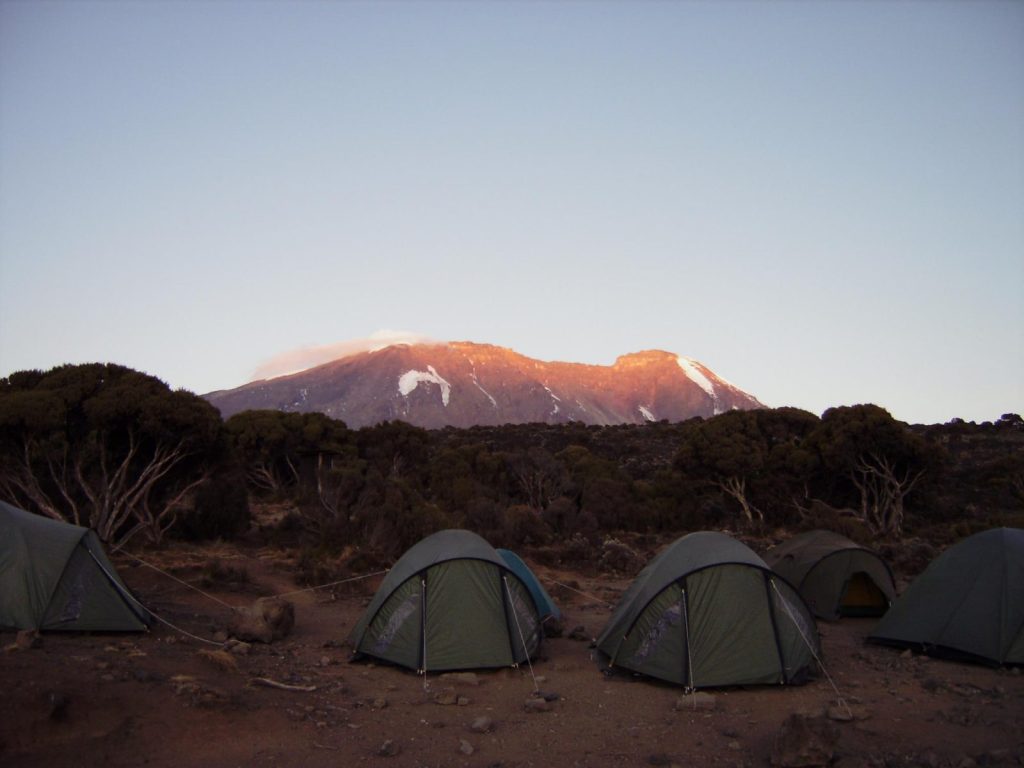
PERSONAL HYGIENE ON KILIMANJARO
The campsite will have hot water near the mess tent where you can fill a bowl in order to have a wash of your face and hands, and clean your teeth. Take a nail brush and even a flannel so you can properly clean the dirt and dust away. We provide soap too but you can bring your own. It’s a good idea to bring a small towel which dries quickly.
You can also ask for a bowl of hot water at camp to take into your tent in order to have a private body wash, plus we do also have a shower tent with a shower bag for larger groups or groups who wish to chip in together for a porter to carry it. The shower bag lasts about 5 minutes and is best used on a hot day when the heat in the shower tent can be nice and warm.
It’s difficult to wash your hair on a Kilimanjaro trek, easier for people with short hair obviously. Some people bring no rinse shampoo shower caps.
Most people bring a packet of wet wipes to keep clean and women tend to bring Femfresh as well. Do also bring some moisturising cream and deodorant.
For people wearing contact lenses, it can be tricky to keep hands perfectly clean and it’s certainly best to put in lenses inside the tent and out of the wind. There is no issue with using lenses at altitude, although in the high thin air it’s common to have dry eyes.
FURTHER HELP
Trekking Boot Guide | Sleeping Bag Guide | What to Wear on Kilimanjaro |Toilets on Kilimanjaro | Top 5 routes on Mt Kenya.
Book Your Adventure of a Lifetime Now
Discover our trips to other Countries
Adventure Alternative Articles
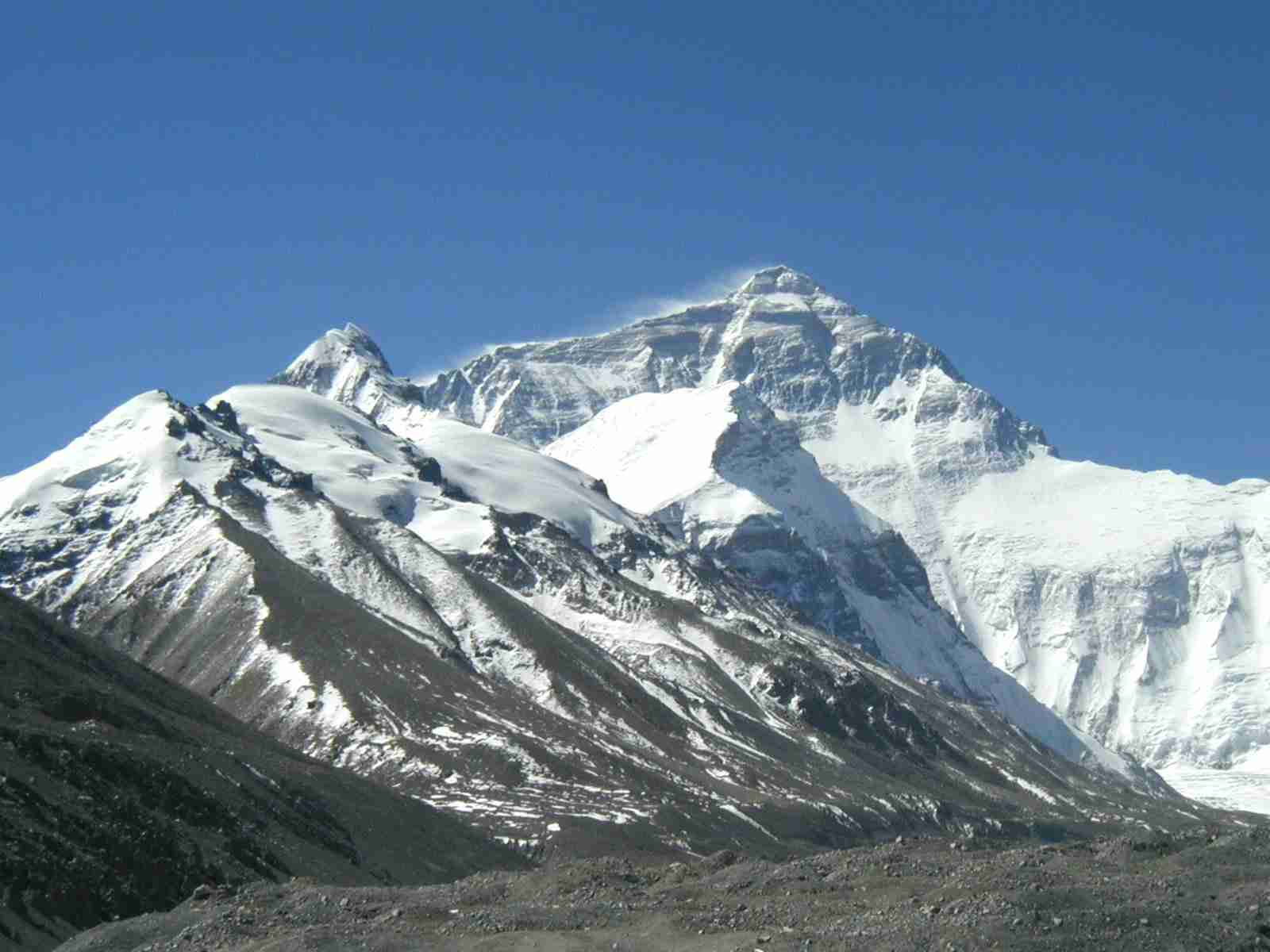
12 MONTHS, 12 MOUNTAINS
Climbing Calendar Ready for World Mountain Day In celebration of World Mountain Day, we've created a calendar for the year to make it easy for...
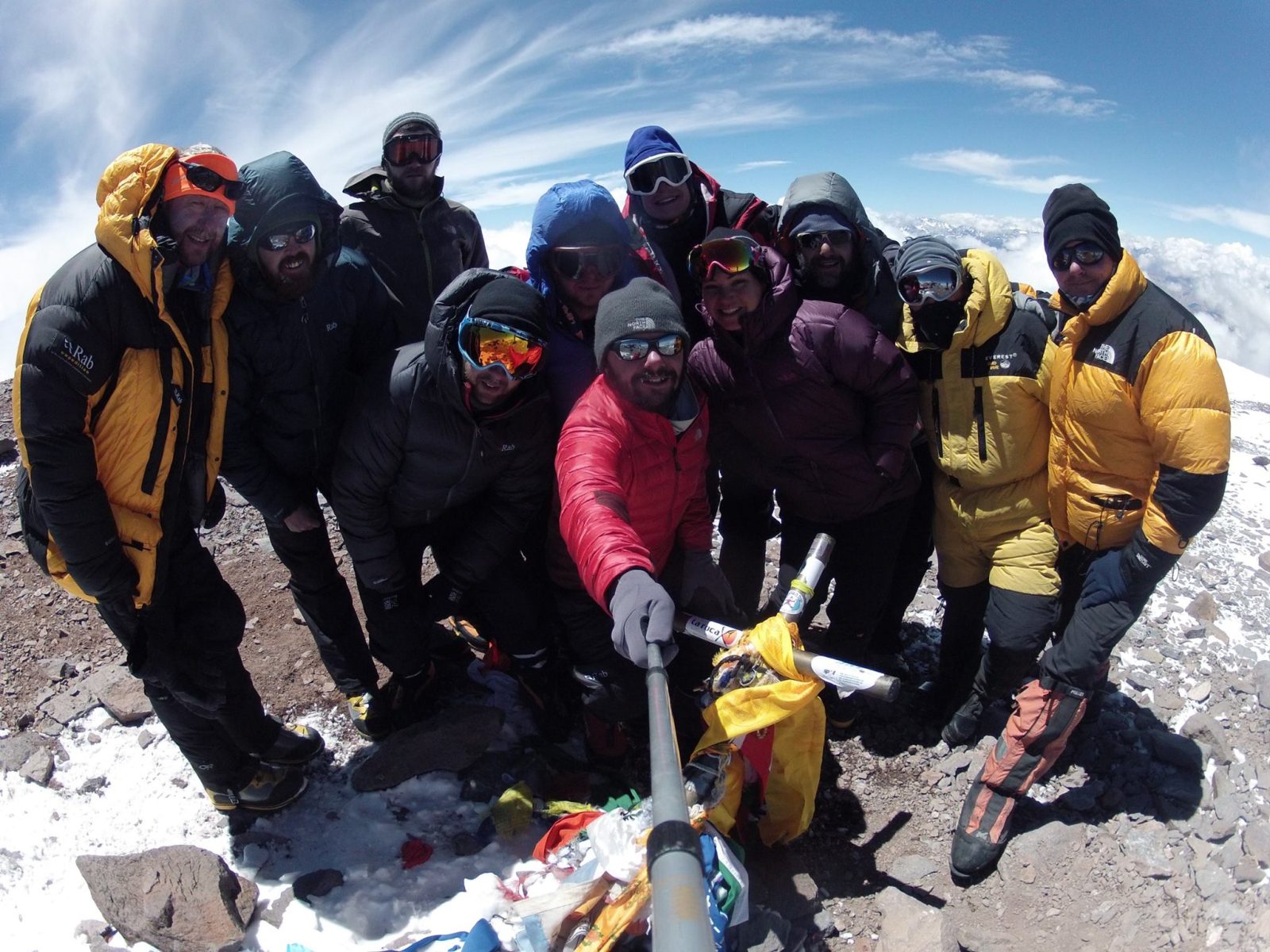
Mount Aconcagua Trip Review
January 2016 This year we had a team of twelve clients from four different countries – Iran, Ireland, England, South Africa and Argentina –...
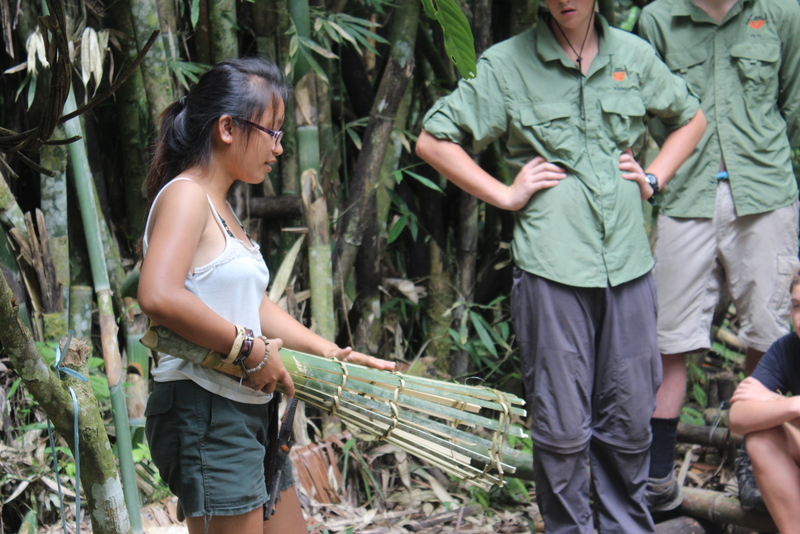
Alcey’s Survival Skills Course at Lupa Masa Jungle Camp
SURVIVAL SKILLS COURSE AT LUPA MASA JUNGLE CAMP | ADVENTURE ALTERNATIVE In celebration of International Rural Women’s Day, we’re talking...